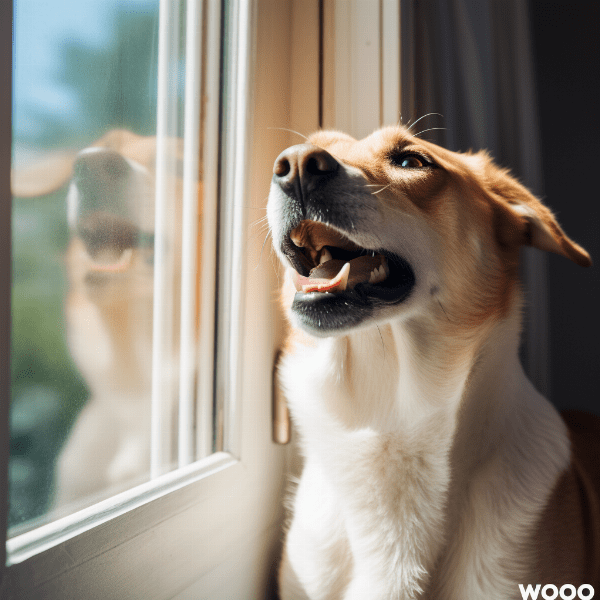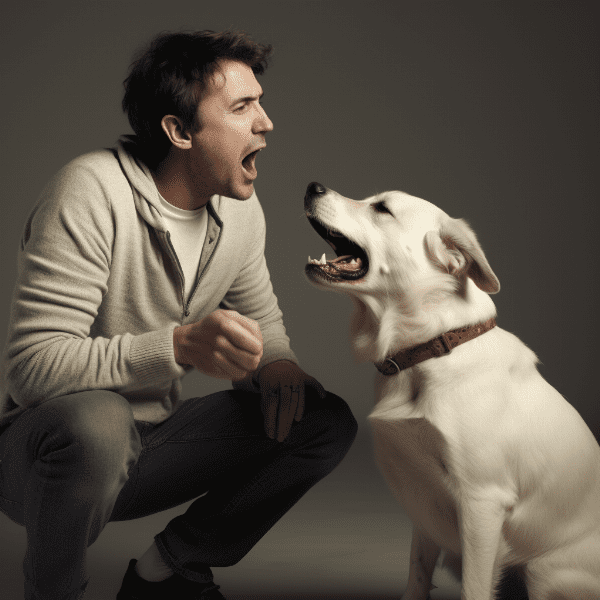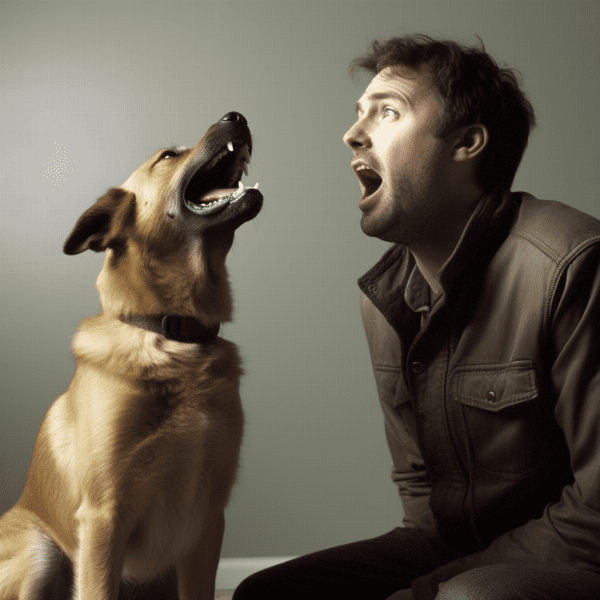Table of Contents
- Understanding the Root Cause of Your Dog’s Barking
- Training Techniques to Help Control Excessive Barking
- Creating a Safe and Calming Environment for Your Dog
- Tips for Socializing Your Dog with People and Other Animals
- Managing Your Dog’s Barking While on Walks
- Identifying Signs of Anxiety or Fear in Your Dog
- When to Seek Professional Help for Your Dog’s Barking
- Using Positive Reinforcement to Encourage Quiet Behavior
- Common Mistakes to Avoid When Addressing Your Dog’s Barking
- Maintaining Consistency and Patience Throughout the Training Process
Understanding the Root Cause of Your Dog’s Barking
Dogs bark for a variety of reasons, and understanding the root cause of your dog’s barking is crucial in addressing the issue effectively. Here are some common reasons why dogs bark excessively:
Lack of Socialization
Dogs that haven’t been socialized properly may bark excessively when encountering new people, animals, or objects. It’s important to socialize your dog from an early age to prevent this behavior.
Fear or Anxiety
Dogs that are fearful or anxious may bark excessively as a coping mechanism. It’s important to identify the source of your dog’s anxiety and work to address it to prevent excessive barking.
Territorial Behavior
Dogs may bark excessively to protect their territory or home. This behavior can be minimized by creating a calm environment and teaching your dog appropriate boundaries.
Separation Anxiety
Dogs that suffer from separation anxiety may bark excessively when left alone. This behavior can be addressed through training and behavior modification techniques.
Medical Issues
In some cases, excessive barking may be caused by an underlying medical issue such as pain or discomfort. If you suspect that your dog’s barking is due to a medical issue, it’s important to consult with your veterinarian.
Understanding the root cause of your dog’s barking is the first step in addressing the issue. By identifying the reason behind your dog’s behavior, you can work to develop an effective training and behavior modification plan to help your dog overcome excessive barking.

Training Techniques to Help Control Excessive Barking
Once you have identified the root cause of your dog’s excessive barking, it’s important to develop a training plan to help address the behavior. Here are some effective training techniques that can help control excessive barking:
Positive Reinforcement
Using positive reinforcement is one of the most effective training techniques for reducing excessive barking. When your dog exhibits quiet behavior, reward them with treats, praise, and affection. This will help your dog associate quiet behavior with positive rewards.
Desensitization
Desensitization involves exposing your dog to the trigger that causes them to bark and gradually increasing their exposure over time. For example, if your dog barks excessively at other dogs, you can start by exposing them to a distant dog and gradually move closer as they become more comfortable.
Counter-Conditioning
Counter-conditioning involves changing your dog’s emotional response to the trigger that causes them to bark. For example, if your dog barks at strangers, you can start by having a stranger offer your dog a treat to associate strangers with positive experiences.
Verbal Cues
Teaching your dog verbal cues can help them understand when barking is appropriate and when it is not. For example, you can teach your dog to “speak” on command and “quiet” on command.
Redirecting Behavior
Redirecting your dog’s behavior can also help control excessive barking. For example, if your dog barks at the mailman, you can redirect their attention with a toy or treat.
By using these training techniques consistently and with patience, you can help your dog learn to control their barking behavior. Remember to always use positive reinforcement and avoid punishing your dog for barking, as this can lead to further behavior issues.

Creating a Safe and Calming Environment for Your Dog
Creating a safe and calming environment for your dog can help reduce excessive barking and promote positive behavior. Here are some tips for creating a peaceful and relaxing environment for your dog:
Provide Plenty of Exercise and Mental Stimulation
Dogs that are bored or understimulated are more likely to bark excessively. Providing your dog with plenty of exercise and mental stimulation through activities like walks, training, and playtime can help prevent excessive barking and promote overall wellbeing.
Establish a Routine
Establishing a routine for your dog can help them feel more secure and reduce anxiety. This includes regular feeding times, exercise, and designated times for rest and relaxation.
Reduce Environmental Triggers
Identifying and reducing environmental triggers that cause your dog to bark can help create a more peaceful environment. This can include reducing exposure to loud noises, minimizing the view of passersby, and creating a designated space for your dog to retreat to.
Use Calming Aids
Calming aids such as pheromone sprays or supplements can also help create a calming environment for your dog. These aids can help reduce anxiety and promote relaxation, leading to less barking behavior.
Consider Professional Help
In some cases, creating a calming environment for your dog may require professional help. Consulting with a veterinarian or animal behaviorist can provide additional resources and guidance to help address excessive barking behavior.
Creating a safe and calming environment for your dog can not only help reduce excessive barking, but also promote overall wellbeing and happiness. By taking steps to minimize environmental triggers and provide plenty of exercise and mental stimulation, you can help your dog feel more secure and at ease in their surroundings.

Tips for Socializing Your Dog with People and Other Animals
Socialization is an important aspect of helping your dog overcome excessive barking behavior. Here are some tips for socializing your dog with people and other animals:
Start Early
Early socialization is crucial in helping your dog develop positive relationships with people and other animals. Exposing your dog to different environments, people, and animals from a young age can help prevent anxiety and fear-based barking behavior.
Gradual Exposure
Gradual exposure is important when socializing your dog to new people and animals. Start with brief, controlled interactions and gradually increase the duration and intensity as your dog becomes more comfortable.
Proper Introduction
Proper introduction is crucial in helping your dog feel comfortable and safe when meeting new people or animals. Always approach with a calm demeanor and allow your dog to approach at their own pace.
Consistency
Consistency is key in helping your dog develop positive socialization skills. Make socialization a regular part of your dog’s routine and continue to reinforce positive behavior with rewards and praise.
.

Managing Your Dog’s Barking While on Walks
Dogs often bark while on walks due to excitement, anxiety, or overstimulation. Here are some tips for managing your dog’s barking behavior while on walks:
Train with Distractions
Training your dog to walk calmly on a leash with distractions is crucial in managing their barking behavior. Start by training your dog in a controlled environment and gradually increase the level of distraction.
Choose the Right Equipment
Choosing the right equipment can also help manage your dog’s barking behavior while on walks. A properly fitted harness can provide more control and reduce strain on your dog’s neck, while a head halter can discourage pulling and barking.
Avoid Overstimulation
Overstimulation can often trigger excessive barking behavior while on walks. Avoid areas with high levels of noise or activity, and be mindful of your dog’s energy level.
Address Underlying Anxiety or Fear
In some cases, barking behavior while on walks may be caused by underlying anxiety or fear. Addressing these issues through training and behavior modification techniques can help reduce excessive barking behavior.
Managing your dog’s barking behavior while on walks requires patience and consistency. By using positive reinforcement, verbal cues, and the right equipment, you can help redirect your dog’s attention and encourage calm behavior while on walks. Addressing underlying anxiety or fear can also help reduce excessive barking behavior and promote positive walks with your dog.

Identifying Signs of Anxiety or Fear in Your Dog
Anxiety and fear are common causes of excessive barking behavior in dogs. Here are some signs to look out for to help identify anxiety or fear in your dog:
Body Language
Your dog’s body language can provide important clues about their emotional state. Signs of anxiety or fear may include trembling, panting, pacing, or avoidance behaviors.
Vocalizations
Excessive barking is often a sign of anxiety or fear in dogs. Other vocalizations such as whining, whimpering, or growling may also indicate anxiety or fear.
Aggression
In some cases, anxiety or fear may manifest as aggressive behavior. This can include lunging, biting, or snapping.
Changes in Appetite or Sleep
Anxiety or fear can also affect your dog’s appetite or sleep patterns. Your dog may lose interest in food or experience difficulty sleeping.
Identifying signs of anxiety or fear in your dog is the first step in addressing excessive barking behavior. By recognizing these signs and addressing underlying issues through training and behavior modification techniques, you can help reduce anxiety and fear-based barking behavior and promote a happier, healthier dog.

When to Seek Professional Help for Your Dog’s Barking
In some cases, excessive barking behavior may require the assistance of a professional. Here are some signs to look out for to help determine when to seek professional help for your dog’s barking:
Persistent Barking
If your dog’s barking behavior persists despite your best efforts to address it through training and behavior modification techniques, it may be time to seek professional help.
Aggressive Behavior
If your dog’s barking behavior is accompanied by aggressive behavior such as biting, snapping, or lunging, it is important to seek professional help immediately to ensure the safety of both your dog and others.
Anxiety or Fear
If your dog’s barking behavior is caused by underlying anxiety or fear, it may require the assistance of a professional to address the root cause and develop an effective treatment plan.
Destructive Behavior
If your dog’s barking behavior is accompanied by destructive behavior such as chewing or digging, it may be a sign of underlying anxiety or fear that requires professional intervention.
Lack of Improvement
If you have been working to address your dog’s barking behavior through training and behavior modification techniques, but have seen little to no improvement, it may be time to seek professional help.
A professional, such as a veterinarian or animal behaviorist, can provide additional resources and guidance to help address excessive barking behavior in your dog. By seeking professional help when necessary, you can ensure the safety and wellbeing of your dog and promote positive behavior.

Using Positive Reinforcement to Encourage Quiet Behavior
Positive reinforcement is a highly effective training technique for encouraging quiet behavior in your dog. Here are some tips for using positive reinforcement to encourage your dog to be quiet:
Identify Triggers
Identifying the triggers that cause your dog to bark is an important first step in using positive reinforcement to encourage quiet behavior. Once you have identified these triggers, you can work to create positive associations with them through rewards and praise.
Reward Quiet Behavior
When your dog exhibits quiet behavior in response to a trigger, reward them with treats, praise, and affection. This will help your dog associate quiet behavior with positive experiences and encourage them to repeat the behavior.
Use Verbal Cues
Teaching your dog verbal cues can also help encourage quiet behavior. Use a cue such as “quiet” to signal to your dog that barking is not necessary, and reward them when they stop barking.
.

Common Mistakes to Avoid When Addressing Your Dog’s Barking
Addressing excessive barking behavior in your dog can be a challenging process. Here are some common mistakes to avoid when addressing your dog’s barking:
Punishing Your Dog
Punishing your dog for barking can actually make the problem worse. This can lead to increased anxiety and fear-based barking behavior, and damage the trust between you and your dog.
Inconsistency
Inconsistency in your training can also be a common mistake when addressing your dog’s barking. Make sure to be consistent with your training techniques and rewards to help your dog understand what behavior is expected of them.
Ignoring Underlying Issues
Ignoring underlying issues such as anxiety or fear can also be a common mistake when addressing your dog’s barking. It is important to address these issues through training and behavior modification techniques to help reduce excessive barking behavior.
Lack of Exercise or Mental Stimulation
Lack of exercise or mental stimulation can also contribute to excessive barking behavior. Make sure to provide your dog with plenty of opportunities for exercise and mental stimulation to help prevent boredom and understimulation.
Allowing Excessive Barking
Allowing your dog to bark excessively can also be a mistake when addressing their barking behavior. While it may be tempting to ignore the behavior, this can reinforce the barking behavior and make it more difficult to address in the future.
Avoiding these common mistakes when addressing your dog’s barking can help promote positive behavior and reduce excessive barking behavior. By avoiding punishment, being consistent with training, addressing underlying issues, providing exercise and mental stimulation, and discouraging excessive barking behavior, you can help your dog develop positive behavior and a happier, healthier relationship with you.

Maintaining Consistency and Patience Throughout the Training Process
Addressing excessive barking behavior in your dog requires patience, consistency, and dedication. Here are some tips for maintaining consistency and patience throughout the training process:
Set Realistic Goals
Setting realistic goals is an important first step in maintaining consistency and patience throughout the training process. Break down your training goals into smaller, achievable steps to help you stay motivated and focused.
Develop a Training Plan
Developing a training plan can also help maintain consistency and patience. Create a structured plan with specific goals and timelines, and stick to it as closely as possible.
Use Positive Reinforcement
Positive reinforcement is a highly effective training technique for addressing excessive barking behavior in your dog. Use rewards and praise to encourage positive behavior and discourage barking behavior.
Be Patient
Patience is essential when addressing excessive barking behavior in your dog. Remember that behavior change takes time, and it is important to remain patient and consistent throughout the training process.
Be Consistent
Consistency is key in helping your dog develop positive behavior. Make sure to use the same training techniques and rewards consistently, and avoid rewarding or reinforcing barking behavior.
Avoid Punishment
Punishing your dog for barking can actually make the problem worse. Avoid punishment and instead focus on positive reinforcement and training techniques to encourage positive behavior.
Maintaining consistency and patience throughout the training process is key in addressing excessive barking behavior in your dog. By setting realistic goals, developing a training plan, using positive reinforcement, being patient and consistent, and avoiding punishment, you can help your dog develop positive behavior and a happier, healthier relationship with you.




